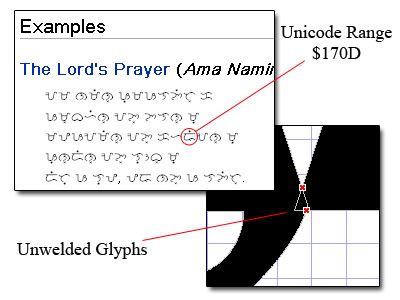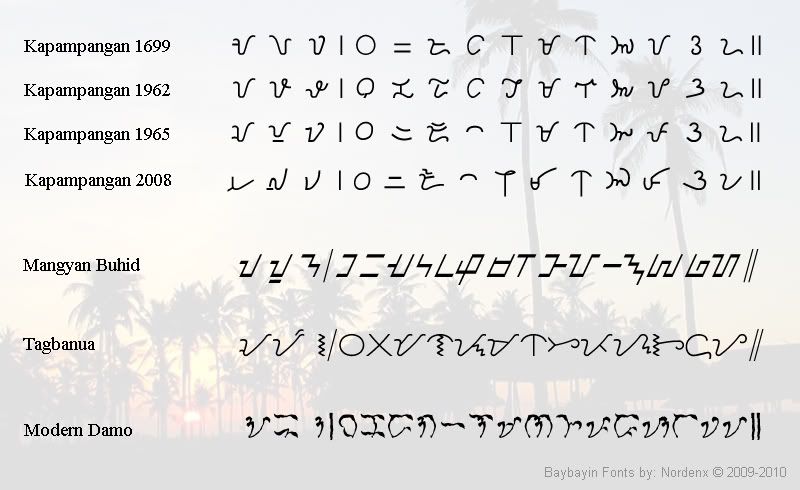On Alibata & Baybayin updates:
I have many new Baybayin and "Alibata" fonts in the works. BTW, I am using the term "alibata" now to categorize baybayin fonts that are not styled after native Asian and
Indic scripts; this will include Arabic Kufic & Western styled fonts and fonts that include expanded consonantal characters like those seen on Bayani Mendoza De Leon's manual (See example @
Christian Cabuay's site). Bear in mind that other than my stylized "Da" for "Ra" and open/closed kudlit or proposed markers, I will not add other new characters deemed unnecessary to my fonts (this means that I wont be making very many "alibata style" fonts). Artistically stylized characters like fantasy, techno, floral, or horror fonts will remain categorized as modern baybayin as long as the character or
glyph shapes are not based specifically on western
typefaces and do not have "expanded" characters. This means that
BMF Block, even though uses Blackletter style is still categorized under "baybayin style" since the character shapes are in essence retains the traditional forms.
My immediate "to-do" tasks:
 Welding Duty...
Welding Duty...
I found out, while developing the Baybayin Typepad app, that glyphs or parts of them that are not welded or joined together in will actually show any overlapping parts if you set the font antialiasing above normal range. My immediate goal before I released any more fonts is to fix these characters in all my released fonts and update all of the download packages. (This is what I get for my laziness) I apologize for my sloppy mistake, after updating the individual zip files I will also package all the updated set into one zip file bundle so that you don't have to download most of them one by one.
Who Ra?
Another thing I just noticed is that the Wikipedia entry, which uses unicode to display baybayin script, is actually using the reserved Tagalog
Unicode address $170D to display "Ra" ("Da" really, duh!) - this is news to me since the
current unicode chart for Tagalog still doesn't have a "Ra" and $170D is still on reserve. I failed to notice the Wikipedia use of $170D until my recent hard drive crash, when I revisited the site without the most basic baybayin fonts (Quivira & Morrow) and it showed the 170D marker for all the "Ra" entries on the examples. Nevertheless, as you can see on the image above, I have begun integrating my "Ra" character onto the $170D address on all my fonts. This will be part of my next font update release.




